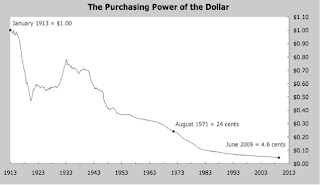If you watched the mainstream media and listened to our politicians you would think that the crisis of 2008 is behind us and we are slowly slowly recovering from what was such an unexpected shock!
Please consider the facts below when assessing whether we are in a recovery or not or whether we have more to come.
US Home Mortgages
- The crisis of 2008 was the result largely of the sub prime mortgage market which was $600 Billion in size.
- If the subprime mortgages were about lending money to people who really should not be lent to then Alt A mortgages and Option ARM mortgages were about lending too much to people who were normally a good credit risk. These types of mortgages offered an extremely low interest rate for the first few years but then would be reset to a higher rate a few years later.
- As Alt A and Option ARM loans are being reset people are finding their new payments rising as high as treble their original payment.
- You have to ask yourself if someone could afford the high payment they would have taken the original higher loan.
- Total Alt A mortgages = $2.4 trillion, total Option ARM Mortgages =$750 billion. Option ARMs are currently defaulting at a rate of almost 40%
- Home owners were able to borrow money against the value of their homes - these are home equity loans, the total home equity loan market is worth $674 Billion
Commercial Real Estate
- An explosion in consumer credit and the housing boom caused a huge expansion in commercial real estate, malls, warehouse space, office space and so on. Now the bubble has burst this will ultimately have drastic effects
- Between 2010 - 2013 $1 trillion of commercial loans will mature and need to be refinanced or paid off.
- There is currently a 7% delinquency rate
Credit Card Debt
- Total outstanding credit card debt almost $900 billion.
- Average credit card debt is $15,788
- Current default rate is 13.01%
- When this credit card debt was amassed holders were paying 0% on their balance transfers. These days are well and truly over with. Some cards now have APRs of over 30%
- Total US Consumer debt =$2.45 trillion.
Europe
- An EU document released in 2009 estimated that $25 trillion would be needed to bail out European Banks of all their bad debts.
- You have heard of Greece's woes, and know about the PIIG countries, what about Hungary, Latvia, Lithuania, Estonia, Poland and so on.
- Deutsche Bank have liabilities (loans) worth over $2 trillion, much of these loans are to the PIIG and other Eastern European Countries. $2 trillion is over 80% of the German Economy. Germany would not be able to bail them out alone.
- The combined liabilities (loans ) of the 2 largest swiss banks is double the GDP of Switzerland.
- Barclays Bank has liabilities totalling more than the GDP of Britain
- When we talk about leverage in very simple terms if you have a leverage ratio of 1:1 then you have very very little risk. If you have a leverage ratio of 100:1 then this is extremely high. All European Banks are leveraged higher that US banks. Much higher. Barclays has a leverage ratio of over 60 Deutsche Bank over 80 to name just 2.
Local, State and National Governments.
- The US government has unfunded liabilities (future payments of social security and medicare etc) of over $100 trillion
- 32 States in the USA are now insolvent.
- Countries raise money by issuing bonds and hope that these bonds are bought up by eager investors.
- In the last year the US and the UK have been forced to buy most of their their own bonds because no one in the market wants them. This cannot carry on forever. The whole financial system relies on the creation of more and more debt.It is not just that these countries have a lot of debt, they are not really taking steps to reduce it.
The Derivative Market
- In our explanation of the financial crisis we talked about Credit Derivatives related to the mortgage market. There is another type of credit derivative called a credit default swap. This is a type of insurance on riskier bonds. If the borrower defaults then the investor is insured against loss.
- The size of this market is estimated at. $45 trillion.
- It is totally unregulated.
- During the hayday anyone and everyone was issuing these Credit Default Swaps, including hedge funds that do not have the assets to pay up should the underlying security default. It's a bit like me offering you car insurance. Everything is great -, you think you are insured and I get $100 a month. Until of course you have an accident and we realize that I dont and never did have the money to cover any accident.
- There are many other types of derivatives, ( interest rate swaps, equity derivatives, commodity options and so forth) they are extremely complicated financial instruments created by "rocket scientists" who lead us to believe that they were able to eliminate risk.
- It was these same rocket scientists and their belief in the end of risk that were the masterminds behind the subprime mortgages Option ARM and ALT A Mortgages. That saw the downfall of Long Term Capital Management and so on.
- The total derivatives market is worth $1.4 quadrillion, bearing in mind if you sold everything in the world it would have a value of $600 trillion and the derivative market is $1.4 quadrillion!!!



























